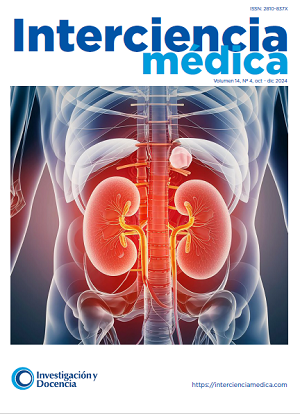Technological innovations used as diagnostic toolsin the detection of prostate cancer
DOI:
https://doi.org/10.56838/icmed.v14i4.231Keywords:
prostate cancer, diagnosis, detection, technology, artificial intelligenceAbstract
Prostate cancer is a disease that directly affects prostate cells. Being the abnormal growth of cells that allows the formation of a malignant tumor that has the ability to invade nearby tissues and in advanced stages, radiates to other organs or regions of the body usually bones and lymph nodes. The objective of this study was to identify the
technological innovations implemented as diagnostic tools in the last six years by means of a literature review. For the acquisition of evidence, a systematic review was carried out in several databases including Sciencedirect, Elservier, PubMed, and Springer, considering the criteria according to the Preferred Reporting Items for Systematic reviews and
meta-Analyses (PRISMA) criteria, using the search terms; Prostate cancer, Technological innovation, detection tools, artificial intelligence. A total of 389 articles were found of which the selected sample that met the criteria described in the methodology were 25. As a synthesis we found the validation of some technologies among these, the use of
Sensors, Biomarkers and genomic technology, nuclear medicine, virtual biopsy algorithms, pixel segmentation, Galen
Prostate, as well as prediction models with automatic learning, all these tools demonstrated a better precision in the
detection of prostate cancer, however, it is necessary to continue developing processes that support their use in new scenarios. Conclusion, the incorporation of technology has significantly transformed the diagnosis of prostate cancer, improving the accuracy, speed and personalization of treatment. These mobilize methods and procedures and allow a more efficient and effective management of the disease.
Downloads
Downloads
Published
Issue
Section
License
Copyright (c) 2024 Jose Siles Luna

This work is licensed under a Creative Commons Attribution 4.0 International License.














